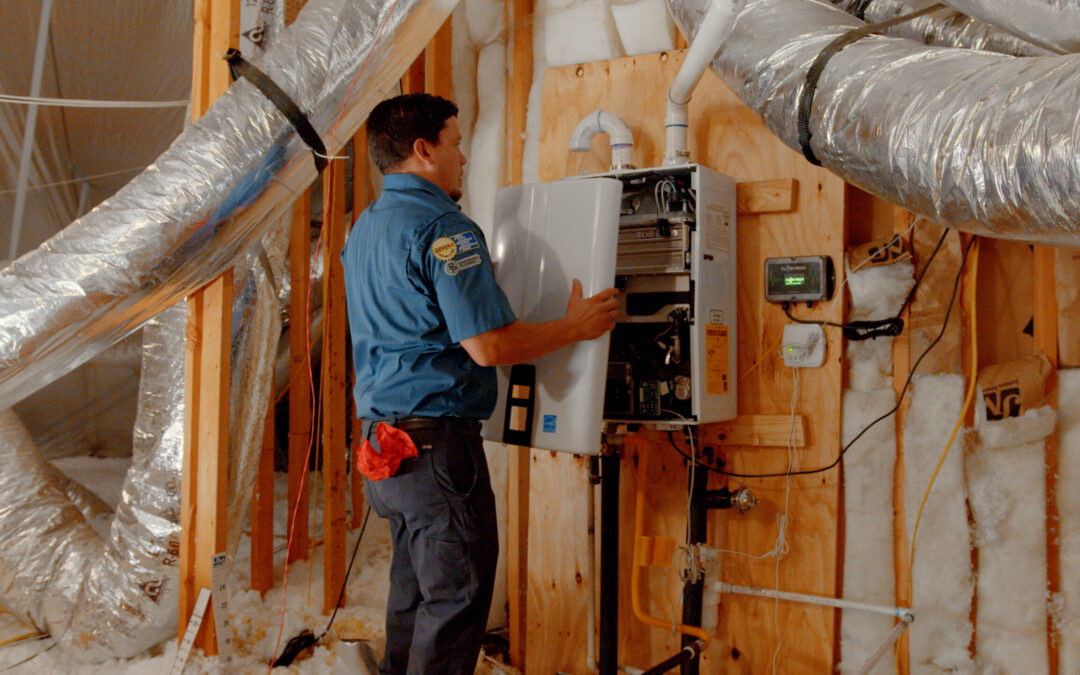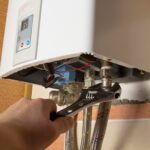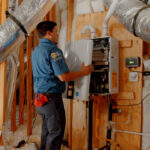The decision to upgrade to a tankless water heating system represents a significant step toward improved energy efficiency, an endless hot water supply, and enhanced home comfort. However, many homeowners find themselves wondering what the installation process actually involves and what they should expect during this important home improvement project. Understanding the installation journey from start to finish can help you prepare properly and ensure a smooth transition to your new tankless system.
Unlike traditional water heater replacements, tankless system installations often involve more comprehensive modifications to your home’s existing infrastructure. This is because tankless units operate differently from conventional storage tank systems, requiring specific considerations for gas lines, electrical connections, venting, and water line configurations. The complexity of these requirements means that professional installation is essential for optimal performance and safety.
The installation process typically unfolds over several phases, each designed to ensure that your new tankless system integrates seamlessly with your home’s existing systems while meeting all safety and performance standards. From initial assessment through final testing and commissioning, each step plays a crucial role in delivering the dependable hot water supply that makes tankless systems so appealing to modern homeowners.
Pre-Installation Assessment and Planning
The foundation of any successful tankless system installation begins with a thorough assessment of your home’s current infrastructure and hot water needs. This comprehensive evaluation process helps determine the most appropriate system size, type, and configuration for your specific situation, ensuring that your new tankless unit will meet your household’s demands effectively.
Professional installers conduct detailed inspections of your existing plumbing, gas lines, electrical systems, and ventilation arrangements to identify any modifications that may be necessary. This assessment phase is crucial because tankless systems often have different requirements than the traditional tank systems they replace, particularly regarding gas supply capacity, electrical power availability, and venting configurations.
The planning phase also involves determining the optimal location for your new tankless unit, considering factors such as accessibility for maintenance, proximity to high-demand fixtures, and compliance with local building codes. This strategic placement can significantly impact both the system’s performance and the complexity of the installation process.
Evaluating Your Home’s Infrastructure
The infrastructure evaluation process examines multiple systems within your home to ensure compatibility with your new tankless unit. Gas supply lines receive particular attention, as tankless systems often require higher gas flow rates than traditional water heaters to achieve their rapid heating capabilities. This evaluation determines whether existing lines can support the new system or if upgrades are necessary.
Electrical system assessment is equally important, especially for gas tankless units that require electrical connections for controls, ignition systems, and safety features. The evaluation includes checking available electrical capacity, outlet locations, and grounding requirements to ensure safe and dependable operation of your new system.
Venting requirements represent another critical aspect of the infrastructure evaluation, as tankless systems often use different venting configurations than traditional units. The assessment examines existing vent pathways and determines whether modifications or new venting installations are necessary to meet manufacturer specifications and local codes.
Determining System Requirements
The system requirement determination process involves analyzing your household’s hot water usage patterns to select the appropriately sized tankless unit for your needs. This analysis considers factors such as the number of bathrooms, simultaneous usage patterns, and peak demand periods to ensure your new system can meet your family’s requirements comfortably.
Flow rate calculations help determine the heating capacity needed to supply adequate hot water to multiple fixtures operating simultaneously. This technical analysis ensures that your new tankless system can handle your household’s maximum demand scenarios without compromising performance or comfort.
Temperature rise requirements are also evaluated based on your local water supply temperature and desired hot water temperatures. This assessment helps determine the heating capacity needed to achieve comfortable water temperatures throughout the year, accounting for seasonal variations in incoming water temperature.
System Selection and Preparation
Once the assessment phase is complete, the process moves to selecting the specific tankless system that best matches your home’s requirements and your family’s preferences. This selection process involves considering various factors, including fuel type, capacity, efficiency ratings, and feature preferences, to identify the ideal system for your situation.
The preparation phase involves ordering the selected system and any additional components or materials needed for the installation. Professional installers coordinate delivery timing to ensure that all necessary items are available when installation begins, minimizing delays and ensuring project continuity.
Preparation also includes obtaining any required permits and scheduling inspections as mandated by local building codes. This regulatory compliance ensures that your installation meets all safety and performance standards while protecting your investment and maintaining your home’s insurability.
Choosing the Right System Type
System type selection involves choosing between different fuel options, with natural gas and propane being the most common choices for residential installations. Each fuel type offers distinct advantages, and the selection often depends on your home’s existing fuel infrastructure and local utility availability.
Capacity selection ensures that your new tankless system can meet your household’s hot water demands effectively. Professional installers help match system capacity to your specific usage patterns, ensuring adequate performance during peak demand periods while avoiding oversizing that could impact efficiency.
Feature considerations include options such as remote controls, recirculation systems, and advanced monitoring capabilities that can enhance convenience and performance. These feature selections allow you to customize your tankless system to match your lifestyle preferences and operational priorities.
Installation Preparation Activities
Site preparation involves clearing the installation area and protecting surrounding surfaces and belongings from dust and debris during the installation process. Professional installers take care to minimize disruption to your daily routine while ensuring safe and efficient work conditions.
Material staging involves organizing all components, tools, and supplies needed for the installation in a systematic manner that promotes efficiency and quality workmanship. This preparation helps ensure that the installation proceeds smoothly without delays or complications.
Safety preparations include establishing appropriate work zones, ensuring adequate ventilation during installation activities, and implementing safety protocols that protect both installers and occupants throughout the project.
The Installation Process
The actual installation of your tankless system involves several coordinated activities that transform your home’s water heating infrastructure. This process typically begins with the removal of your existing water heating system, followed by any necessary modifications to accommodate the new tankless unit’s requirements.
Professional installers work systematically through each installation phase, ensuring that all connections are properly made and tested before proceeding to the next step. This methodical approach helps ensure that your new system is installed correctly and will provide years of dependable service.
The installation process also includes integrating your new tankless system with your home’s existing plumbing and utility systems, ensuring seamless operation and optimal performance. This integration requires careful attention to detail and extensive knowledge of both tankless technology and residential utility systems.
Removal and Site Preparation
The removal process involves safely disconnecting and removing your existing water heating system, taking care to properly handle any residual water or fuel connections. Professional installers follow established safety protocols during removal to protect your home and ensure safe working conditions.
Site preparation for the new tankless unit may involve modifications to mounting surfaces, utility connections, or ventilation pathways. These preparations ensure that your new system will be properly supported and connected according to manufacturer specifications and local building codes.
Utility disconnection and reconnection procedures are carefully managed to minimize disruption to your home’s hot water supply. Professional installers coordinate these activities to reduce inconvenience while ensuring safe and proper connections throughout the process.
System Installation and Connections
The physical installation of your tankless unit involves secure mounting and proper positioning to ensure optimal performance and accessibility for future maintenance. Professional installers use appropriate mounting hardware and techniques to ensure long-term stability and safety.
Gas line connections require precise work to ensure safe and leak-free operation. Professional installers use proper fitting techniques and conduct thorough leak testing to verify the integrity of all gas connections before system startup.
Water line connections involve integrating your new tankless system with your home’s existing plumbing infrastructure, ensuring proper flow rates and pressure throughout your hot water distribution system. These connections are carefully tested to verify proper operation and prevent future issues.
Testing and Commissioning
The testing and commissioning phase represents the final step in your tankless system installation, ensuring that everything operates correctly and safely before the installation is considered complete. This comprehensive testing process verifies that your new system meets all performance specifications and safety requirements.
Professional installers conduct systematic testing of all system components, from basic operational functions to advanced safety features. This thorough testing process helps identify and address any issues before they can impact your system’s performance or dependability.
The commissioning process also includes initial system optimization and adjustment to ensure optimal performance for your specific installation conditions. These fine-tuning activities help maximize efficiency and ensure that your new tankless system operates at peak performance from day one.
Performance Verification
Performance testing involves verifying that your new tankless system delivers the expected flow rates and temperatures throughout your home’s hot water distribution system. This testing ensures that your investment delivers the performance improvements you expect from your upgrade.
Safety system testing verifies that all built-in safety features operate correctly, protecting against various potential issues. These safety systems are crucial for dependable operation and peace of mind throughout your system’s operational life.
Efficiency verification ensures that your new system operates at optimal efficiency levels, maximizing energy savings and minimizing operating costs. This testing helps confirm that your tankless system delivers the economic benefits that motivated your upgrade decision.
System Optimization and Training
System optimization involves adjusting operational parameters to match your specific usage patterns and preferences. Professional installers fine-tune these settings to ensure optimal performance and efficiency for your particular household needs.
User training provides you with the knowledge needed to operate your new tankless system effectively and recognize normal operational characteristics. This education helps you maximize the benefits of your new system while understanding when professional service might be needed.
Maintenance guidance helps you understand the simple maintenance activities that can help ensure long-term dependability and performance. Professional installers provide clear instructions for routine maintenance that homeowners can safely perform themselves.
Post-Installation Considerations
Following the completion of your tankless system installation, several important considerations help ensure long-term satisfaction and optimal performance. Understanding these post-installation factors can help you maximize the benefits of your investment while maintaining system dependability over time.
The initial break-in period for your new tankless system may involve some adjustment as you become familiar with its operational characteristics. Professional installers provide guidance on what to expect during this period and how to optimize your system’s performance as you learn its capabilities.
Ongoing maintenance requirements for tankless systems differ from traditional water heaters, and understanding these differences helps ensure continued dependable operation. Professional installers provide comprehensive information about maintenance schedules and requirements specific to your new system.
Initial Operation and Adjustment
The first few weeks of operation provide an opportunity to become familiar with your new tankless system’s performance characteristics and to make any necessary adjustments to optimize its operation for your household’s specific needs. This adjustment period helps ensure that you’re getting maximum benefit from your investment.
Usage pattern optimization involves learning how to best utilize your new system’s capabilities, including understanding how simultaneous usage affects performance and how to maximize efficiency during peak demand periods. This knowledge helps you get the most from your tankless system’s advanced capabilities.
Performance monitoring during the initial operation period helps identify any adjustment needs and ensures that your system is operating as expected. Professional installers provide guidance on what performance indicators to monitor and when to contact them if questions arise.
Long-Term Maintenance and Support
Maintenance scheduling helps ensure that your tankless system continues to operate at peak efficiency and dependability throughout its service life. Understanding the recommended maintenance intervals and procedures helps protect your investment and maintain optimal performance.
Professional service relationships provide ongoing support for your tankless system, ensuring that expert assistance is available when needed for maintenance, adjustments, or any service requirements that may arise. These relationships help maintain system dependability and your peace of mind.
Warranty considerations include understanding what is covered under your system warranty and what steps are necessary if warranty service is ever needed. Professional installers provide clear information about warranty terms and how to access warranty support if required.
The tankless system installation process represents a comprehensive transformation of your home’s water heating infrastructure, involving careful planning, skilled installation, and thorough testing to ensure optimal results. Understanding what to expect during this process helps you prepare appropriately and ensures that your installation experience is as smooth and satisfactory as possible.
Whether you’re motivated by energy efficiency improvements, endless hot water availability, or space-saving benefits, a professionally installed tankless system can deliver significant advantages that enhance your daily life and provide long-term value. The installation process, while comprehensive, represents a worthwhile investment in your home’s infrastructure and your family’s comfort.
If you’re considering upgrading to a tankless water heating system and want to understand how the installation process would work in your specific home, contact our experienced team to discuss your needs and learn more about what to expect during your tankless system installation.











